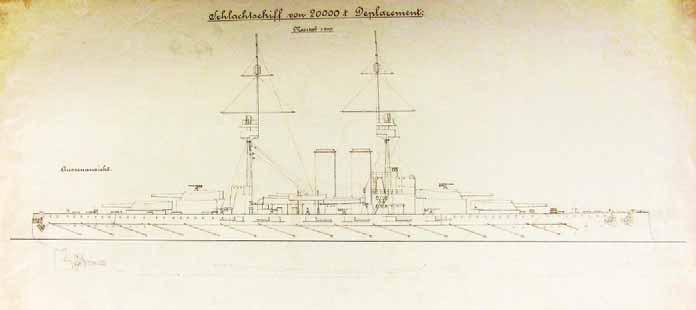was protected by a mechanical device which was removed before loading. The brass case had its advantages and disadvantages. This type of propellant container allowed higher rates of fire and was less likely to catch fire in case of damage from a shell hit. It was also less likely to suffer a flareback type of disaster caused by the smoldering remnants from the previous propellant charge. However, it had to be removed from the gun and be safely handled out of the turret after firing. This could be uncomfortable in the cramped gunhouses of the large caliber gun turrets. For ejecting the spent cases from the turret there were holes cut in the footplate at the rear part of the gunhouse. The ejected heavy caliber cases rolled freely back and forth on the open deck around the turrets. After a firing practice or engagement, the expensive cases were collected and inspected. Large caliber cases were reusable 8 to 10 times. Cases which were considered no longer reusable were sent back to the factory for recasting. After 1910, fifty percent of all the naval cases were manufactured by the Weiss Manfréd Works in Csepel, Hungary and the other fifty percent by different Austrian (and Czech) factories. Unfortunately, there is little information to judge how accurate and reliable were these Škoda 24 cm/45 and 30.5 cm/45 naval guns. The seven largest and most modern Austro-Hungarian battleships never fired their guns in anger on an enemy ship. Six of the seven ships participated in the Bombardment of Ancona in 1915 when they fired on land targets and one ship, the Radetzky bombarded the French batteries in Montenegro in 1914. Two ships, the Szent István and the Erzherzog Franz Ferdinand, never fired their 30.5 cm guns in anger. The report on the bombardment of the French batteries on Mount Lovčen found the accuracy of the 24 cm and 30.5 cm guns of the Radetzky satisfactory.570 The most serious accident of a large caliber Škoda gun occurred on 21 August 1913 when an overloaded 30.5 cm/45 gun exploded on the Saccorgiana test ground near Pola. The explosion killed three sailors and seriously injured Vizeadmiral Karl Lanjus von Wellenburg who stood near the gun. His lower legs were amputated and he died on the next day in the hospital. There are some reports of minor accidents but in the majority of cases it was found that they were caused by mishandling by the gun crews. For the battleships
as a weapon system, it was not the guns but the obsolete fire control system that was the weakest link. Gun Turrets The gun turrets of the Radetzky and the Tegetthoff classes were all-electric operated, as would have been the turrets of the “Improved Tegetthoff ” class. Turrets were fed by steam turbine driven dynamos providing 110 Volt DC current. The documentation of the Škoda 30.5 gun turrets is rather incomplete, but the available plans, documents and the 1/25 scale Viribus Unitis model suggest that on these turrets Ward Leonard control was used. The Škoda presented its first 30.5 cm triple turret design to the Navy in October 1909. According to this design the firm planned to use so-called Universal-transmissions on the triple turret. The Universal-transmission was a hydraulic, variable speed transmission driven by an electric motor, which had the same function as the Ward Leonard control.572 One year later for an unknown reason Škoda abandoned the idea of using electro-hydraulic turret machinery and the September 1910 triple turret design incorporated the Ward Leonard control.573 The complete gun turrets of the battleships actually built were manufactured by the Škoda Works, excluding turret armor, fire control equipment and some safety devices. The revolving portion of an Austro-Hungarian gun turret (gunhouse and rotating turret stalk) rested on the stool (Untersatz), which was a massive construction made of steel plates inside the barbette on the Batteriedeck. The bottom part of the ball path was attached to the top of the stool, while the top part of it was attached to the underside of the gunhouse. Austro-Hungarian gun turrets, like Germans, rested on steel balls of 16-17 cm diameter instead of rollers. The ring gear of the training gear (Backszahnkranz) was attached to the bottom part of the stool. There were hold-down clips (Klauen) to prevent the turret from upsetting when the guns were firing. The bottom of the rotating stalk rested on a central pivot. Through this center pivot entered into the turret the electric cables, the compressed air pipelines and the air duct of the turret ventilation. All of the 24 cm and 30.5 cm twin turrets had four flats (levels) in their rotating stalks. Lower tri-
— 157 —






























